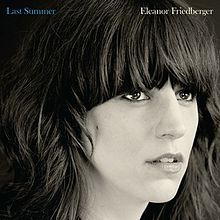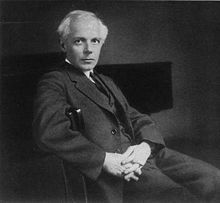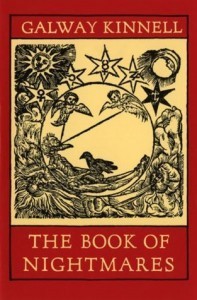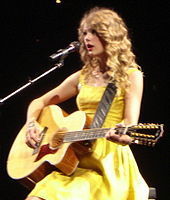Scott Timberg's Blog, page 23
November 4, 2014
“What’s With All the Jazz Bashing?”
SOME of America’s smartest publications — the ones that often offered robust and serious jazz coverage in decades past — have recently been running articles (satiric, critical or otherwise) dissing one of my favorite art forms. New Yorker, Atlantic, New York Review of Books… What’s behind it?
Music historian and CultureCrash ally Ted Gioia tries to puzzle it out in a new essay in the Daily Beast.
Jazz doesn’t get much coverage in the mainstream media, and hasn’t for many years. But something strange has happened during the last four months. Over a period of just a few weeks, a host of high profile periodicals have published smug, scornful dismissals of the music. Is this just coincidence, or has something changed in the cultural dialogue?
How did jazz go from America’s musical treasure to whipping boy? Let’s go back to the last day in July, when The New Yorker set the tone with the publication of an interview with Sonny Rollins. Here the sax legend offered observations “in his own words” on his life and times. But, as the jazz community soon learned, this wasn’t really an interview with Rollins, now 84 years old, and the
comments attributed to him weren’t his own words, but a satire concocted by a writer who had learned his craft at The Onion.
…Just nine days later, the Washington Post ran a caustic article that began with three memorable sentences: “Jazz is boring. Jazz is overrated. Jazz is washed up.”
Ted goes on from there, sketching the way jazz increasingly gets caricatured as a pretentious, compulsory kind of culture.
I won’t spoil his conclusion. Have some thoughts on this myself and they’ll probably have to wait until after my trip.
Part of me wants to say to the haters: Go listen to a Dinah Washington or Charlie Parker song, or read about what a lot of these musicians — especially the black musicians — went through as they built and sustained their careers. And then tell me jazz is something worth mocking.
What Happened to Net Neutrality?
What about the idea that the Internet would become a level playing field, an outlet for democracy and independent voices, rather than a corporate-dominated, winner-take-all wasteland like commercial radio? Well, it’s taken one step forward and two steps back, or perhaps vice versa — the new proposal is very hard to figure out.
Here’s what the Future of Music Coalition — a group whose policies I often, not always, concur with, posted:
This week, news broke that theFederal Communications Commission (FCC) is working ona new proposal for net neutrality that attempts to combine a couple different approaches. While we appreciate the effort, net neutrality advocates care less about how slick the rules are, and more about whether they’ll stand up in court.
Because last time they didn’t.
The vast majority of Americans want an Internet that works for everyone, and not just the biggest companies. And millions of us are on record supporting the reclassification of broadband service under Title II of the Telecommunications Act. Title II makes use of a longstanding principle in communications policy known as “common carriage.” This is not some radical idea. It’s been around since choo-choo trains and it’s the reason why
when you pick up the phone to call your bandmate, you don’t have to wait for the rich people to finish talking first.
…We don’t want clever net neutrality. We want real net neutrality.
One of my favorite scribes on this issue, Robert Levine of Free Ride, tweeted: “I’m so glad the FCC is choosing a net neutrality policy that will continue to confuse the living hell out of everyone . . .”
Too many assignments and an upcoming trip keep me from weighing in further today. But I’ll try to keep tracking the issue as it develops.
November 3, 2014
“Warhol Films” and Eleanor Friedberger
The Brooklyn Academy of Music will soon host an odd hybrid performance recently put on at UCLA’s Royce Hall, Exposed: Songs for Unseen Warhol Films. Curated by my friend Dean Wareham, the show, which included legendary guitarist Tom Verlaine and Bradford Cox of Deerhunter and others, was mixed-to-brilliant, depending on who was playing: It had a funny stop-start movement because of all the four-and-a-half-minute films.
Among the highlights for me was the three-song set by Eleanor Friedberger, who I still associate with her old band, Fiery Furnaces, despite what’s become a really inventive solo career.
Here is a video from a song from her last album, which Merge put out last year.
I’d happily buy a disc of her interpreting all of these short films, especially with that great overdriven guitar sound she gets.
“Dido” and “Bluebeard” at LA Opera
YOUR humble blogger came out of a performance of Duke Bluebeard’s Castle yesterday reminded of what a bloody genius Bela Bartok was — and I mean that just about literally. The production at Los Angeles Opera is brutally sharp, filled with sexual menace. The swelling, at times astringent music itself offered a dark kind of beauty to accompany the pain.
What may be most impressive about the performance is that the same stage director — Barrie Kosky, who runs an opera co in Berlin — also offered up a pastel-toned, often-comic reading of Purcell’s Dido and Aeneas. From the sweet colors and lavish gowns of the Purcell to the stark, pitch-black look of the Bartok, here is a director with a contemporary sense of visual style. Overall, it made for a much hipper double-bill than the usual Cav-Pag.
The Bartok hit me harder than the Purcell, but the Irish mezzo-soprano who played Dido, Paula Murrihy, has one of the clearest and most beautiful voices I’ve heard in years.

Bartok 1927
Here’s how Mark Swed begins his review:
Four cautious years after staging Achim Freyer’s cutting-edge but coffer-draining “Ring” cycle, Los Angeles Opera has once more sharpened its edge, and dangerously so. On Saturday night, it mounted a peculiar double bill of Purcell’s delicate “Dido and Aeneas” and Bartók’s indelicate “Bluebeard’s Castle.”
Purcell’s exquisite British Baroque miniature is as gorgeous to behold as anything the company has mounted on the Dorothy Chandler stage. It is lovingly performed. That the humor can be wicked and transgressive only makes the tragedy all the more touching in the end.
Bartók’s expressionist early 20th century drama is the unsettlingly awful opposite. There is nothing nice to look at, just a couple’s pain made plain. The performance is violent. What is here transgressive is that horror also makes a mass murderer somewhat touching in the end as well.
I’ve loved Bartok since I first heard his music, and have a special passion for his string quartets. But I can’t wait to hear Bluebeard again. (For what it’s worth, my wife, who’s been seeing opera for longer than I have, loved them both but preferred Dido.) In any case, see them before they go. Kudos to LA Opera for putting on something this adventurous.
UPDATE: As I think back to Bartok in particular, and the way he’s able to capture such a wide emotional range, using dissonance within an essentially tonal structure, and bring a modern sensibility to music that is still essentially tuneful and accessible: What if Bartok, and not Schoenberg and his serial disciples, had set the terms for 20th century music? How would classical music have sounded different over the decades, and what would its audience be like today?
I welcome reader thoughts on this.
October 31, 2014
Is European Arts Funding Doomed?
ONE subject that comes up a lot on this site, especially in reader comments, is the public funding of art by European nations. That funding makes a lot of things possible — including access — that the market would not support. A new dispatch from Paris — where a private museum designed by Frank Gehry has recently opened — describes French arts funding as beginning the path to privatization.
France’s leadership is struggling to pay for the government it provides. While the capital remains a global magnet of culture, it increasingly risks becoming a playground for the world’s elite, detached from its midsize cities, villages and countryside, where rising hardships stoke resentments and widen the opening for far-right parties.
The tough economic climate is forcing France to revisit its vaunted model by which the state funds and manages the arts, and the juxtaposition of the two museums made clear the lurking shift being forced on France’s values, with all the attendant controversies.
The Louis Vuitton Foundation is just the latest example of how French cultural glory is being privatized. And the epic troubles of the Musée Picasso — closed five years amid cost overruns and a staff revolt — illustrate how even
a state with a proud history of arts patronage retooled its approach in the face of an erosion of resources.
As someone who’d like to see the fine arts thrive in this country, as remain as accessible as possible, I mostly prefer their system. There are advantages to both systems, but mostly this story made me weep.
Several of this site’s most active commenters often discuss the advantages of European-style arts funding, the implication sometimes being that if Americans knew how much better things were there, they’d adopt the system used by pretty much all the other civilized democracies. We did recently follow their lead (incompletely and with enormous political violence) regarding universal healthcare.
But this story reinforced my hunch that rather than the U.S. becoming more like Europe, that the ideological force of US/UK-style neoliberalism — along with austerity politics and the continued economic slump — will make those other countries more like us, with culture less well funded and more dependent on the market and its popularity contest. I’ve spoken recently two two Scandinavian composers, of different generations, and gotten a sense of how much support the arts are losing even in the Nordic states.
This is one of those predictions at which I’d be happy to be wrong. But hard to imagine this ending well.
October 30, 2014
David Byrne: Big Money is Killing Art
THE ravages of the one percent — and what their surge has done to culture — is one of my abiding concerns on the blog. Now the Talking Heads frontman, who’s been quite outspoken lately on the politics of culture, weighs in on what the plutocracy has done to visual art. A New York Times post looks at his complaint as well as the context around it.
“I used to be able to convince myself that contemporary art was some kind of forum for ideas and feelings about the world we live in,” Mr. Byrne writes. “But hang on! It is! Those ideas and feelings are now about money and sucking up to those that have it and will part with a little bit of it. That is the world we live in! The work is indeed a commentary on our world, but the work is part of that swirl of luxury as well.”
For him, the economics now affect how he sees the work. “I have begun to view the work itself as being either intentionally or unconsciously produced expressly to cater to the 1%,” he writes, adding: “I can’t see the work or any ideas behind most of it anymore — if there even are any. The ideas might be there. The artists might be holding on to their integrity and be maintaining their distance from the dirty business of buying and selling, but I can no longer see it.
The post gets into Jerry Saltz’s complaints about artist Jeff Koons, and the larger issue of how we assess aesthetic things these days.
But with Mr. Koons, art fairs and auction houses, it’s often more about the metrics than the art. And the metrics used for measuring success, both in price and location, in the art world bother Edward Winkleman, writing at his blog: “The overarching trend here is to lazily borrow metrics from other asset markets or entertainment channels, even though most everyone will argue that true importance and quality in art transcend mere market concerns or popularity.”
Like the rest of the Op-Talk pieces, this post doesn’t take sides or solve the issue, but touches down on some important points that swirl around art, money, and the new Gilded Age.
UPDATE: Here’s a paragraph from Byrne’s original post:
It’s sad—I used to be able to convince myself that contemporary art was some kind of forum for ideas and feelings about the world we live in. But hang on! It is! Those ideas and feelings are now about money and sucking up to those that have it and will part with a little bit of it. That is the world we live in! The work is indeed a commentary on our world, but the work is part of that swirl of luxury as well. The intention of the artist might be ironic, but when their creations mimic the things and the world being criticized so perfectly, then the irony gets lost. A skull made of diamonds might be a comment on the over-the-top luxury mode of the art world, but it is more definitely of that world as well. The irony is sort of lost, if it was ever there. Now abstract art can safely be said to be about nothing but how big it is, where it can be placed and how much it costs.
Sigh. His points about irony especially resonant.
October 29, 2014
Farewell to Poet Galway Kinnell
Twenty years ago, a few friends and I piled into an old car and drove up to the Sunken Garden Poetry Festival at a little CT town to see one of the titans of American poetry read. The night transformed me, and those friendships, in ways hard to put into words.
Now Galway Kinnell has died, after a long and rich life. He and his thundering voice will be missed.
Here is a link, from the Poetry Foundation, to one of his best poems.
October 28, 2014
When Music Sounds Like a Cash Register: Taylor Swift
WHAT happens when a society gets obsessed with those who win at the capitalist game, when marketing becomes the new religion, and the gatekeepers of art and music stop caring ab0ut the fields in which they labor but get hypnotized by the machinery of star-making? We get “artists” like Jeff Koons or Taylor Swift.
The onetime country singer — the descendent of several generations of bank presidents — is celebrated in the press for her marketing and self-branding (like George W. Bush she’s framed herself as a folksy “regular” person), which seems to be more important to many scribes than the machine-made blandness of her music. (What’s with all the stories on the pseudo-events that make up her PR strategy? I know pop music has always been, in part, about money.)
Compare her to real country heroes like Johnny Cash, or Willie Nelson, or Lucinda Williams, and her genius is really for self-promotion, not music-making. Much of the media coverage seems uninterested in noticing this: The hunter has been captured by the game.
That’s why I’m especially pleased with the New York Times story about the backlash to Swift’s world-domination campaign.
Taylor Swift has been named a Global Welcome Ambassador for New York City a week after the release of her single “Welcome To New York” — but for many listeners (and viewers of the surrounding publicity campaign), her depiction of the city is neither particularly accurate nor particularly enticing.
The story quotes a Village Voice story by Tessa Stuart about Swift’s new role as New York’s ambassador: “Some people might look at all this and say Swift is a marketing genius with an eye for ~ S y N e R g Y ~ …Others (us) will say she’s a cyborg sent to this planet to convince people without ideas to drink Diet Coke, and shop at Target, and move to New York.”
The story also quotes Dayna Evans on Gawker:
I’m not sure who comes off worse in this public relations horror: New York City or Taylor Swift. When affordable housing is near impossible to come by and as monolith branded-cool companies push out arts communities and while entitled rich children run through the streets proclaiming ownership over everything and while minority arrests continue for low-level crimes, the least (or most?) likely choice for the promotion of a city with equal problems and triumphs is a whitebread out-of-towner who says, ‘Hey, don’t think about those scary, unjust things! Let’s talk about that night we stayed out late dancing instead!’
I expect Ms. Swift is a very nice person, and lots of her fans are, too; I don’t mean to incur the wrath of legions of teenage girls. But in the same week the New Yorker devotes an enormous amount of space to Billy Joel, another overrated hack — while so many more talented musicians starve on a tiny sliver of the sales and attention — I am awaiting the end of this latest media cycle.
Most musicians who hit young have stage parents to some degree, but the story of Swift’s rise resembles the way billionaire Sheldon Adelson tried to buy Newt Gingrich the presidency. Her banker father certainly knew how to exploit a market niche: He moved to the family to Nashville so little Taylor could break in, hired expensive handlers, and bought part of her label. This is the winner-take-all culture taken to a whole higher level.
October 27, 2014
Slowcore with Bell Gardens
A FEW years ago I went to the LA club I still think of as Spaceland to see an indie rock band; I think it was Army Navy. The opening band seemed to have a lot of people, and they opened very slowwwly… but by the end of their set I’d been transported. They’re somewhere between Radar Bros and Sigur Ros.
That group — LA’s own Bell Gardens — has a new album out today, Slow Dawns for Lost Conclusions. I’ve attached a video that gives a sense of some of its songs. This is a group whose music deserves to be heard with better, richer sound than my computer has to offer, though. And what’s great about these songs is the way they build. But this offers a taste.
— has a new album out today, Slow Dawns for Lost Conclusions. I’ve attached a video that gives a sense of some of its songs. This is a group whose music deserves to be heard with better, richer sound than my computer has to offer, though. And what’s great about these songs is the way they build. But this offers a taste.
They’ve got some shows coming up, and an album release performance at Permanent Records in LA’s Highland Park neighborhood on Saturday, Nov. 1.
October 26, 2014
Saariaho: Finnish Composer
ONE of the several nice things about conductor Esa-Pekka Salonen being back more solidly in Los Angeles, where he has a post with the LA Phil, is the steady infusion of strong new or modern music from Scandinavia, a region which has been on a roll for the last few decades.
Last night I saw a Salonen-conducted concert at Walt Disney Concert Hall that includes pieces by Janacek, Sibelius and the conductor’s Finnish contemporary, Kaija Saariaho.
Her piece Earth Shadows (Maan varjot in Finnish), made its world premiere in Montreal in the spring. It has a second movement that is just as eerie and harmonically strange as Brian Eno’s ’70s music. The piece, which includes an organ, deserve s to be performed more widely. There’s a descending figure on the strings that made me feel like my seat was moving.
s to be performed more widely. There’s a descending figure on the strings that made me feel like my seat was moving.
Here’s Mark Swed’s review of the whole concert.
Scott Timberg's Blog
- Scott Timberg's profile
- 7 followers




